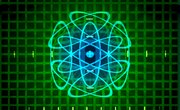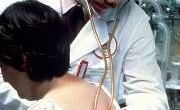Medicine owes a lot to the field of physics. There are some significant advances and important gains physics has made to the field. Some of the most basic concepts we take for granted are due to physics, such as blood pressure. Without a basic understanding of physics, medical personnel couldn't do something as simple as find someone's blood pressure.
Vital Statistics
A patient has a few statistics that medical personnel use to determine their health. These statistics are body temperature, pulse rate, respiration rate and blood pressure. These stats are the four basic ones used to determine general immediate health. Without the ability to measure them, caring for a patient would be difficult.
Radiography
Another basic tool for diagnosing a patient is an X-ray, which are high-energy particles harnessed for medical usage. Without X-rays, health care personnel wouldn't be able to see inside a person without surgery. Similarly, more recent developments, such as magnetic resonance imager (MRI) technology, owe their development and existence to the thorough understanding and application of advanced physics.
Needles
Another common object most people don't realize uses complex physics is the hypodermic needle. Through pressure changes, health care professionals can apply medicine directly into a patient's bloodstream. Without this ability, for example, diabetics couldn't take insulin.
Biology Uses Physics
Biology is not the most fundamental natural science; it involves assumptions taken from physics and chemistry. Therefore, to properly understand biology, a fundamental understanding of physics is required. For example, the reason you put pressure on a wound is it constricts the blood vessels and makes the required amount of pressure for blood to escape greater. Without physics, this technique wouldn't be well-understood, and other life-saving techniques that derive from it might not have been developed or utilized.
Greater Understanding of the World
Finally, it is important to know such a topic not necessarily for reasons we can foresee, but because a greater knowledge of a topic as fundamental as physics can be useful. For example, imagine a patient had been pierced by a long rod. You would want to remove the rod. In order to do this, you may want to cut off one side and pull it out from the other side. However, the weight of the rod must be properly balanced, or it could suddenly drop and damage the patient more. Resolving this situation would involve a counterbalance. It may seem obvious, but the proper weight and procedure would be dictated by physical principles. If you know at least the basics, that knowledge can be applied to help patients.










